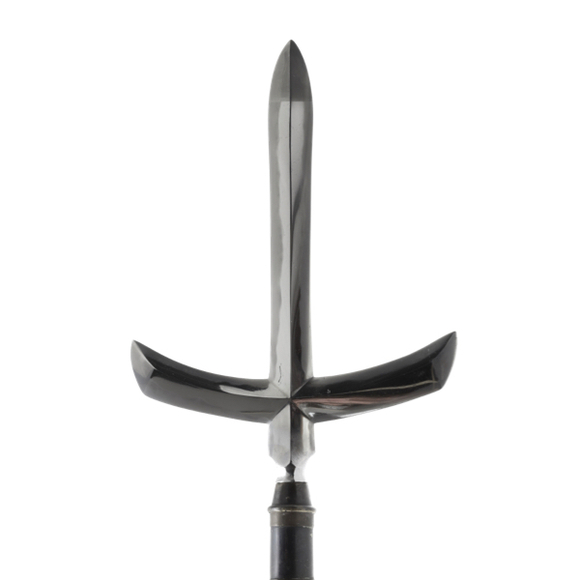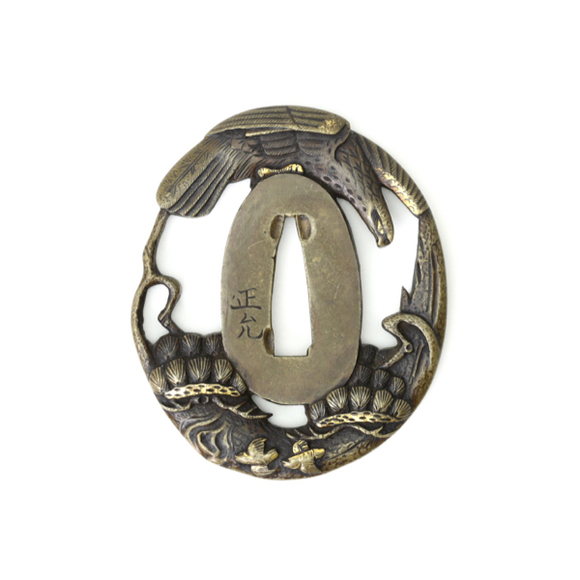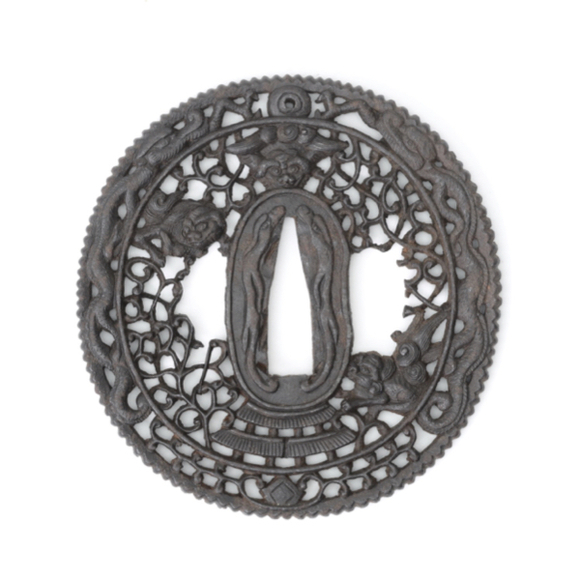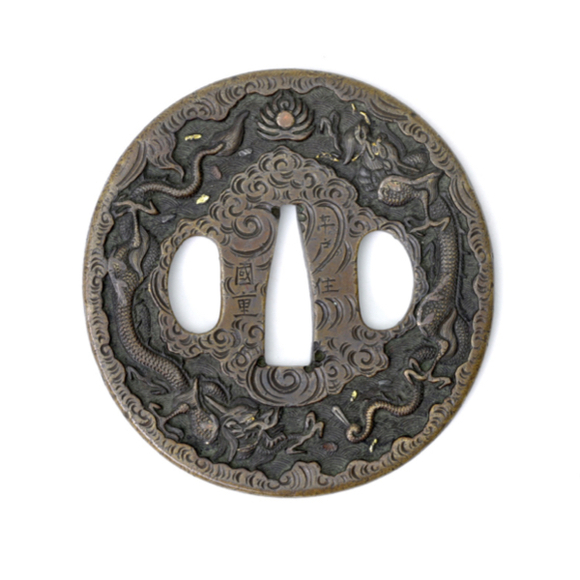Language: Japanese
Source: In common use
Description
Jūmonji yari (十文字槍) literally means "letter ten spear", because the written word for ten is a simple cross. It is thus perhaps best translated as "cross spear".
The weapon was mainly popular from the 17th century onwards, and famously wielded by the warrior monks of the Hōzōin-ryu style of spearmanship.


A jūmonji yari by Kanabō Masazane.
Listed at Mandarin Mansion in 2023.
Jūmonji yari and the Hōzōin warrior monks
Legend has it that the jūmonji yari was invented by Hōzōin temple warrior monk Kakuzenbō In'ei, who was inspired by the reflection of the crescent moon on Sarusawa Pond in Kōfuku-ji. He then founded a school of spearmanship around 1560 called Hōzōin-ryū that specialized in its use. Whether he really designed it remains uncertain, but if anyone popularized its use, it was certainly him. Hōzōin-ryū became a wildly popular form of spearmanship in a time of intense civil war.1
The spears for the Hōzōin warrior monks were made by the Kanabō school of swordsmiths. The Kanabō school was a relatively small and isolated school of swordsmiths in Kanabōtsuji (金房辻) in Nara, Yamato province. The school's exact origins are unknown, but the earliest known Kanabō smiths were Tadayuki (忠行), Masashige (正重), and Masazane (正真), all thought to have been active around the Eishō period of 1504-1521. The school was mainly active in the 16th century.
"They have gained a reputation as master yari makers
and it is said that they had a contract with the Hōzō Temple (宝蔵院) for yari." 1
-Dr. Honma Junji, 1963
The school reached such fame that a young Miyamoto Musashi, considered Japan's best swordsman, went there to challenge them in 1605. Musashi was only 21 at the time while Hōzōin Kakuzenbō In'ei was already 84, and his successor 16. So they had another monk Okuzōin Dōei duel Musashi. Unlike many of Musashi's duels, this was a friendly match, and no-one died. Apparently, Musashi did win, but there was such mutual respect that he stayed, and talked with Kakuzenbō In'ei until dawn.
After the unification of Japan, Kakuzenbō In'ei left the martial path and in 1607 forbade the teaching of his spearmanship and sold much of the armory of the temple. His nephew Hōzōin Inshun revived the art after his death. Today, only some ruins of the Hōzōin remain in what is now Nara Park, but its martial arts are still practiced.
Notes
1. Official website of Hōzōin-ryū, hozoin.jp. Accessed April 24, 2023.
2. Honma Junji; Nihon Koto Shi. 1963. Translated by Markus Sesko. Lulu Publishing. Available at Lulu.com. Page 238.
Famous jūmonji yari
Mori Nagayoshi (1558-1584), an officer of the Oda clan, famously wielded a jūmonji yari in battle. His fierce demeanor in battle gave him the nickname Oni-Musashi, "the Demon of Musashi." Mori Nagayoshi entered his second battle in 1574 and reputedly decapitated 27 enemies with his jūmonji yari during that battle.
He then had a peculiar inscription added to the tang that reads:
人間無骨
ningen-mukotsu
"humans have no bones"
After his death, his jūmonji yari has been kept in the Oda clan. It was published in 1796.1

Mori Nagayoshi's jūmonji yari as described in Kamata Natae, Honchō Kaji Kō, Volume 18, Edo. 1796.

Photograph of Mori Nagayoshi's jūmonji yari.
Published in Kigen Nisenroppyaku-Nen Hōshuku Meihō Nihontō Tenrankai Chutchintō Zuroku, Yūshūkan Museum, 1940, p. 47.
References
Thanks for Markus Sesko for pointing out this yari in his Metropolitan Museum newsletter "Dispatches from the Field", July 2023.






